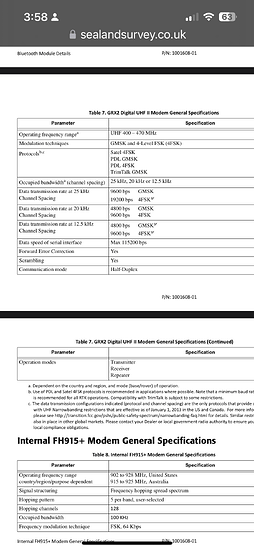In our previous post, we shared with you how to get the most out of tilt compensation on Reach RS3. In today’s post, we want to tell you about another feature Reach RS3 has—a dual-band radio.
Reach RS3 combines two radios in one housing which allows you to mix and match RTK receivers you have:
-
LoRa radio is a radio that allows you to set up RTK communication between two Reach receivers set up as a base and a rover, in our case, between Reach RS3 and any multi-band Reach model.
-
UHF radio is a radio that allows you to set up RTK communication between Reach RS3 set up as a rover and a third-party base that also communicates over UHF radio.
Requirements for UHF radio
Let’s look at the UHF radio in more detail. To ensure integration of a third-party base with Reach RS3 over UHF radio, your third-party base should operate in the 410.0 - 475.0 MHz band and support the TRIMTALK450S* protocol. We’ve also developed a specially tuned Emlid UHF 410-470 MHz antenna for increased range, which you can add to the cart along with RS3 at the time of purchase in our store.
How to set up RTK communication with third-party base over UHF radio
To set up RTK communication between your Reach RS3 rover and third-party base over UHF radio, follow the steps from the dedicated guide in Docs and check out the tips which will help you with the setup and operation:
As for the baseline between your base and the rover, it depends on the transmitter power of the base, Reach RS3 will work with any, but has no control over it.
How to set up RTK connection with Reach base over UHF radio
You may be wondering if you can connect an external UHF radio to stream corrections from your Reach RS2/RS2+ or Reach RS3 to Reach RS3 via UHF radio. We’re widening choices and have made that possible too. Note that the chosen radio should consider the characteristics of the UHF radio on Reach RS3. Before use, check the specifications.
If you have questions or want to share your experience, leave us a comment below and contact us at support@emlid.com.
*TRIMTALK is a trademark of Trimble Inc.





